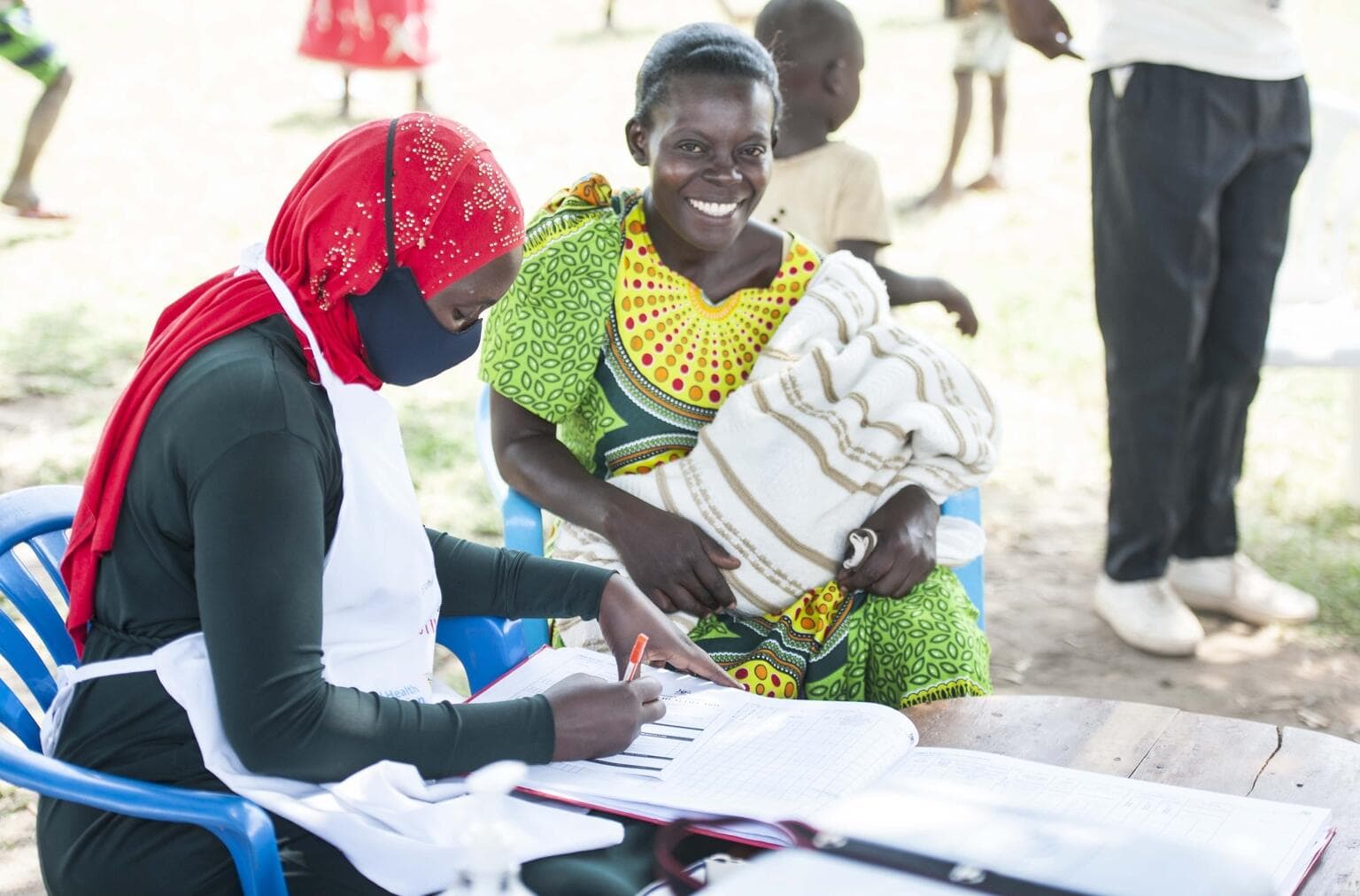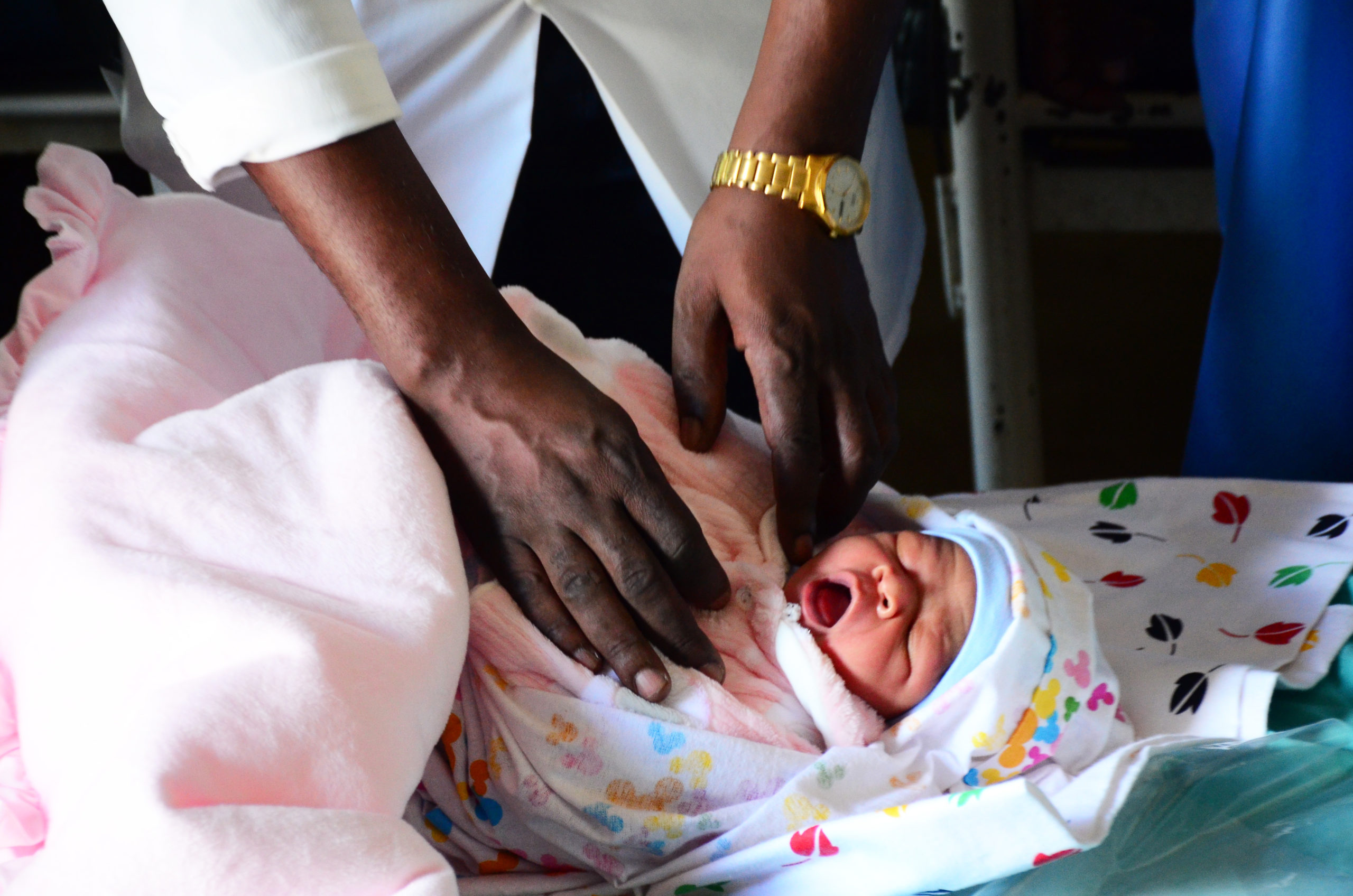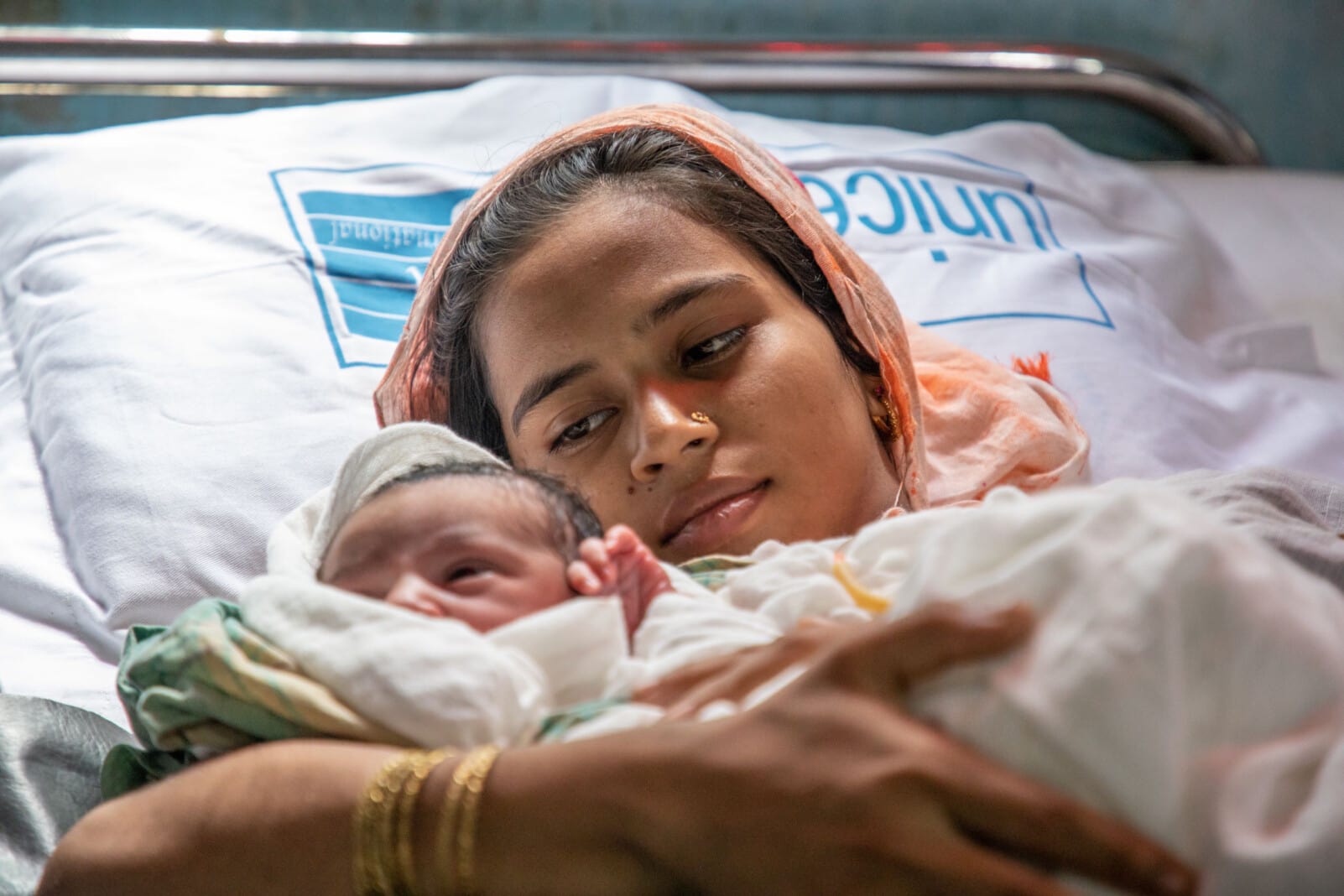Antenatal care is essential for protecting the health of women and their unborn children
Through this form of preventive health care, women can learn from skilled health personnel about healthy behaviours during pregnancy, better understand warning signs during pregnancy and childbirth, and receive social, emotional and psychological support at this critical time in their lives. Through antenatal care, pregnant women can also access micronutrient supplementation, treatment for hypertension to prevent eclampsia, as well as immunization against tetanus. Antenatal care can also provide HIV testing and medications to prevent mother-to-child transmission of HIV. In areas where malaria is endemic, health personnel can provide pregnant women with medications and insecticide-treated mosquito nets to help prevent this debilitating and sometimes deadly disease.
Regular contact with a doctor, nurse or midwife during pregnancy allows women to receive services vital to their health and that of their future children. The World Health Organization (WHO) has updated its recommendations from a minimum of four antenatal care contacts to a minimum of eight contacts to reduce perinatal mortality and to improve women’s experience of care. However, data reporting at the global, regional and country levels are currently only available for a minimum of four visits, aligned with the previous recommendation. These data indicate that the proportion of women receiving at least four antenatal care visits varies greatly between countries, ranging from 24 per cent in countries in sub-Saharan Africa to over 90 per cent in countries across regions including Latin America and the Caribbean and European regions.
Globally, while 88 per cent of pregnant women access antenatal care with a skilled health personnel at least once, only two in three (69 per cent) receive at least four antenatal care visits. In regions with the highest rates of maternal mortality, such as Western and Central Africa and South Asia, even fewer women received at least four antenatal care visits (56 per cent and 55 per cent, respectively). In viewing these data, it is important to remember that the percentages do not take into consideration the skill level of the healthcare provider or the quality of care, both of which can influence whether such care succeeds in bringing about improved maternal and newborn health.
Historical data show that the proportion of women receiving at least four antenatal care visits has increased globally over the last decade. The scale and pace of this progress, however, differs greatly by region. In Western and Central Africa, for example, only about half of pregnant women received four or more antenatal care visits between 2015 and 2021 (56 per cent). Stronger and faster progress is needed across all higher burden regions to drastically improve maternal and newborn outcomes.
Disparities in antenatal care coverage
Despite progress being made, large regional and global disparities in women receiving at least four antenatal care visits are observed by residence and wealth. Women living in urban areas are more likely to receive at least four antenatal care visits than those living in rural areas, with an urban-rural gap of 20 percentage points (79 per cent and 59 per cent, respectively). In addition, antenatal care coverage increases with wealth, with those in the richest quintile being almost twice as likely to receive at least four antenatal care visits than those in the poorest quintile, with a wealth gap of 29 percentage points (78 per cent and 49 per cent, respectively).
References
UNICEF, 2019, Healthy Mothers, Healthy Babies: Taking stock of maternal health, New York 2019.
World Health Organization, 2016, WHO recommendations on antenatal care for a positive pregnancy experience 2016.
UNICEF, The State of the World’s Children 2023 , UNICEF, New York, 2023.
WHO, UNICEF, UNFPA, The World Bank and the United Nations Population Division, Trends in Maternal Mortality: 2000 to 2020, WHO, Geneva, 2023.
Antenatal care coverage
Maternal and Newborn Health Coverage
Build and download your own customisable dataset
Resources




Notes on the data
Definition of indicators
Antenatal care coverage (at least one visit) is the percentage of women aged 15 to 49 with a live birth in a given time period that received antenatal care provided by skilled health personnel (doctor, nurse or midwife) at least once during pregnancy.
Skilled health personnel refers to workers/attendants that are accredited health professionals – such as a midwife, doctor or nurse – who have been educated and trained to proficiency in the skills needed to manage normal (uncomplicated) pregnancies, childbirth and the immediate postnatal period, and in the identification, management and referral of complications in women and newborns. Both trained and untrained traditional birth attendants are excluded.
Antenatal care coverage (at least four visits) is the percentage of women aged 15 to 49 with a live birth in a given time period that received antenatal care four or more times. Available survey data on this indicator usually do not specify the type of the provider; therefore, in general, receipt of care by any provider is measured.
Antenatal visits present opportunities for reaching pregnant women with interventions that may be vital to their health and well-being and that of their infants. WHO recommends a minimum of four antenatal visits based on a review of the effectiveness of different models of antenatal care. WHO guidelines are specific on the content of antenatal care visits, which should include:
- blood pressure measurement
- urine testing for bacteriuria and proteinuria
- blood testing to detect syphilis and severe anaemia
- weight/height measurement (optional).
Measurement limitations. Receiving antenatal care during pregnancy does not guarantee the receipt of interventions that are effective in improving maternal health. Receiving antenatal care at least four times, which is recommended by WHO, increases the likelihood of receiving effective maternal health interventions during antenatal visits. Importantly, although the indicator for ‘at least one visit’ refers to visits with skilled health providers (doctor, nurse or midwife), ‘four or more visits’ refers to visits with any provider, since standardized global national-level household survey programmes do not collect provider data for each visit. In addition, standardization of the definition of skilled health personnel is sometimes difficult because of differences in training of health personnel in different countries.
